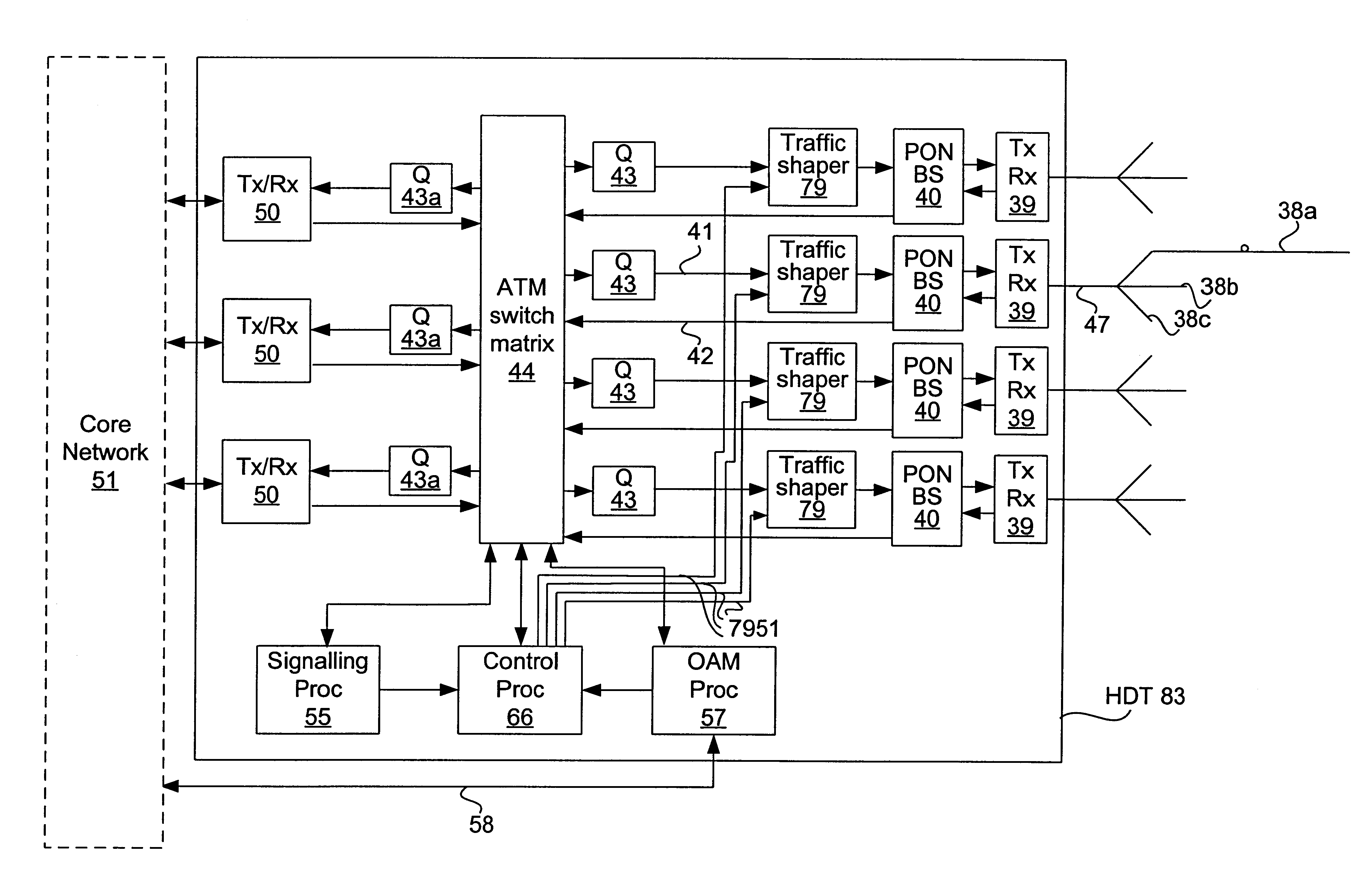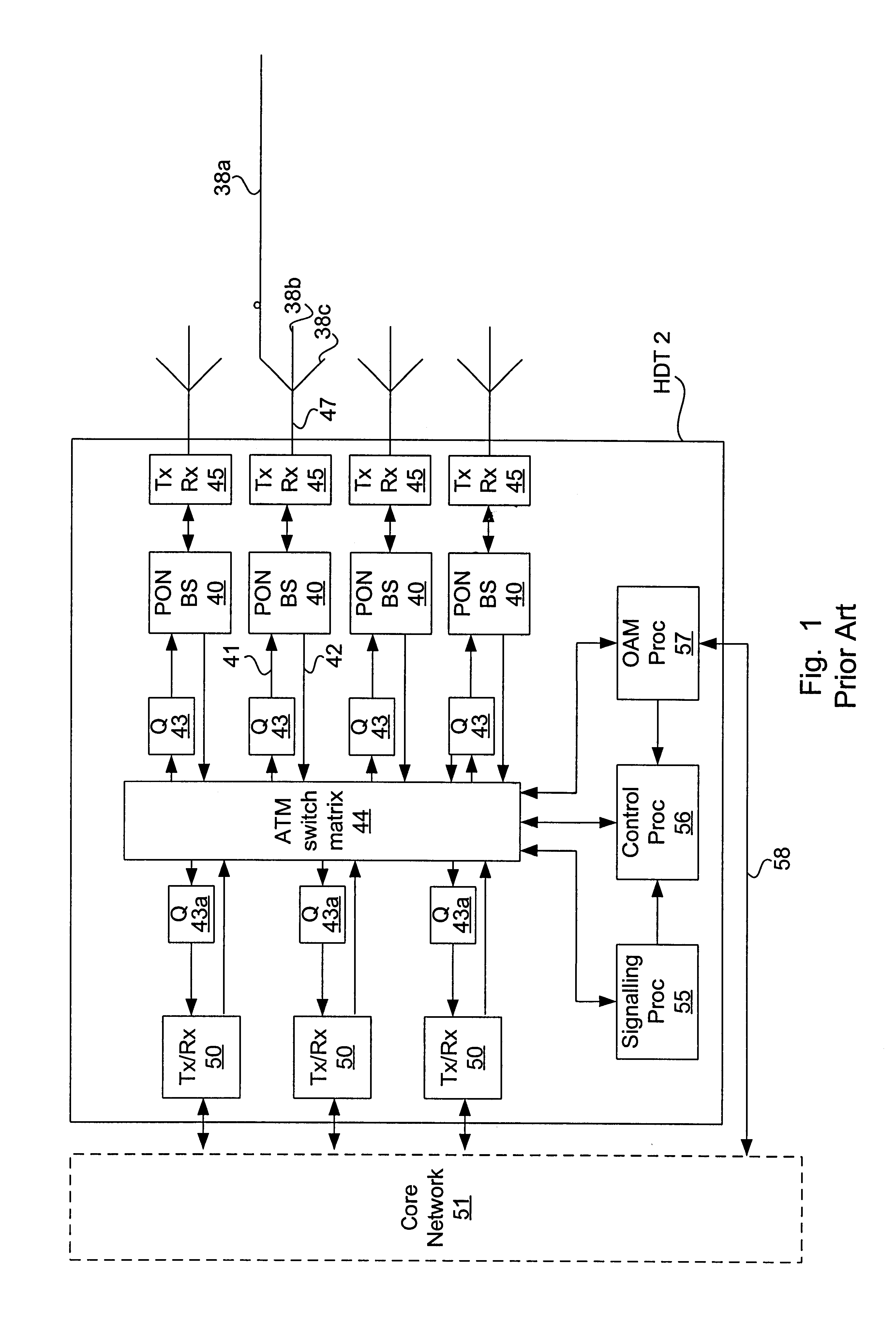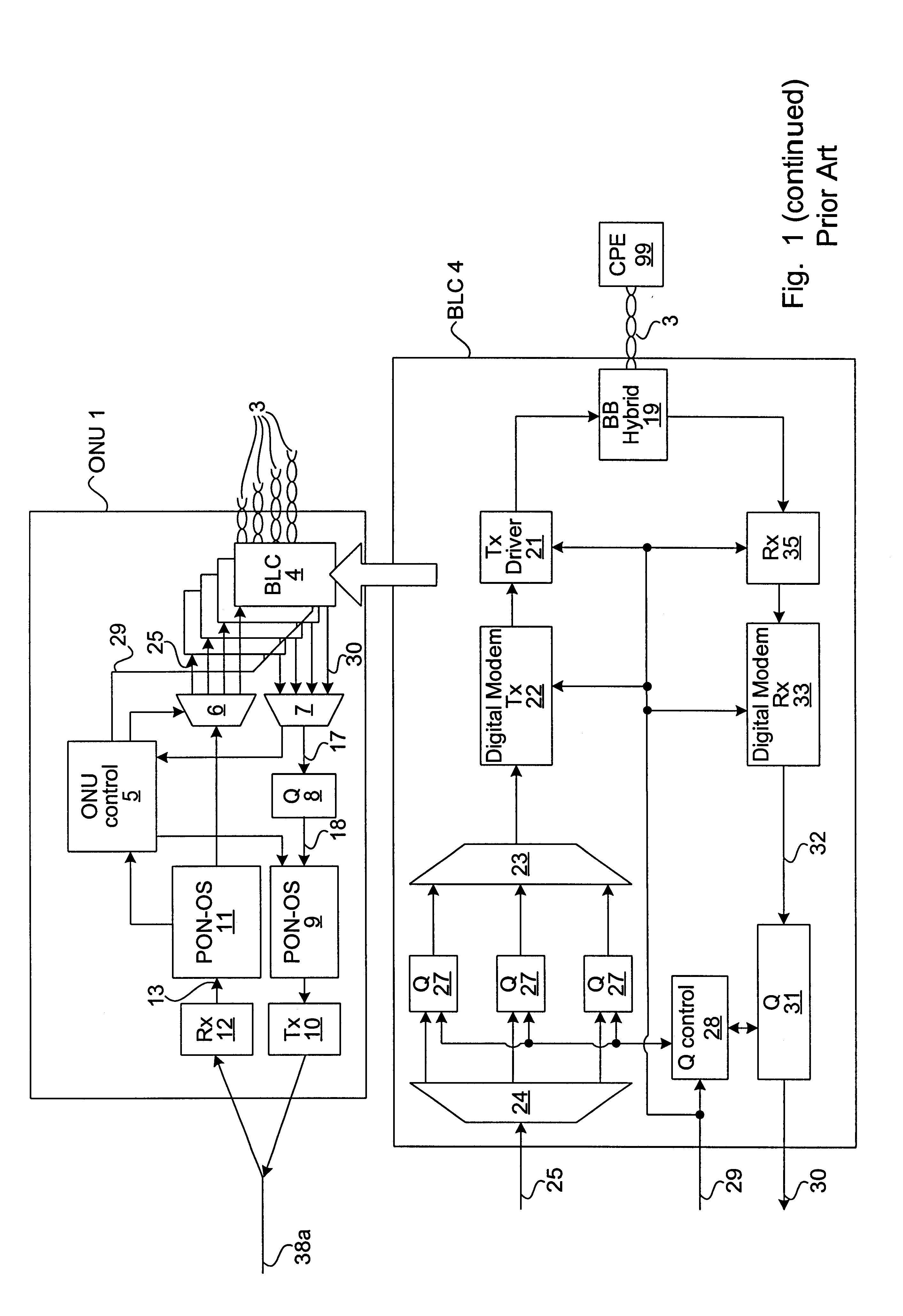Method and apparatus for traffic shaping in a broadband fiber-based access system
a technology of broadband fiber and access system, applied in the direction of transmission monitoring, frequency-division multiplex, data switching network, etc., can solve the problems of excessive increased complexity of queue control block 28, and increased complexity of buffer outside the blc. , to achieve the effect of increasing complexity, cost, power consumption and physical siz
- Summary
- Abstract
- Description
- Claims
- Application Information
AI Technical Summary
Benefits of technology
Problems solved by technology
Method used
Image
Examples
Embodiment Construction
Reference is now made to FIG. 3, which depicts an access system in accordance with the present invention, comprising an HDT 83 connected between a core network 51 and a plurality of ONUs 59 (only one of which is shown) in a PON configuration. A SONET ring or a plurality of individual point-to-point links can also be used to interconnect the ONUs and HDT. Without loss of generality, it can be assumed that a bidirectional optical fiber feeder 47 connects the HDT 83 to an optical splitter (not shown), which passively splits / joins a plurality of fiber umbilicals 38a,b,c leading to respective ONUs. Alternatively, there may be a pair of dedicated optical fibers along each link to separately transport upstream and downstream traffic.
As in the prior art, the HDT 83 comprises a switch matrix 44 connected in a known way to a signalling processor 55, a control processor 66 and an OAM processor 57 connected by its own control line 58 to the management layer of the core network 51. The control p...
PUM
 Login to View More
Login to View More Abstract
Description
Claims
Application Information
 Login to View More
Login to View More - R&D
- Intellectual Property
- Life Sciences
- Materials
- Tech Scout
- Unparalleled Data Quality
- Higher Quality Content
- 60% Fewer Hallucinations
Browse by: Latest US Patents, China's latest patents, Technical Efficacy Thesaurus, Application Domain, Technology Topic, Popular Technical Reports.
© 2025 PatSnap. All rights reserved.Legal|Privacy policy|Modern Slavery Act Transparency Statement|Sitemap|About US| Contact US: help@patsnap.com



